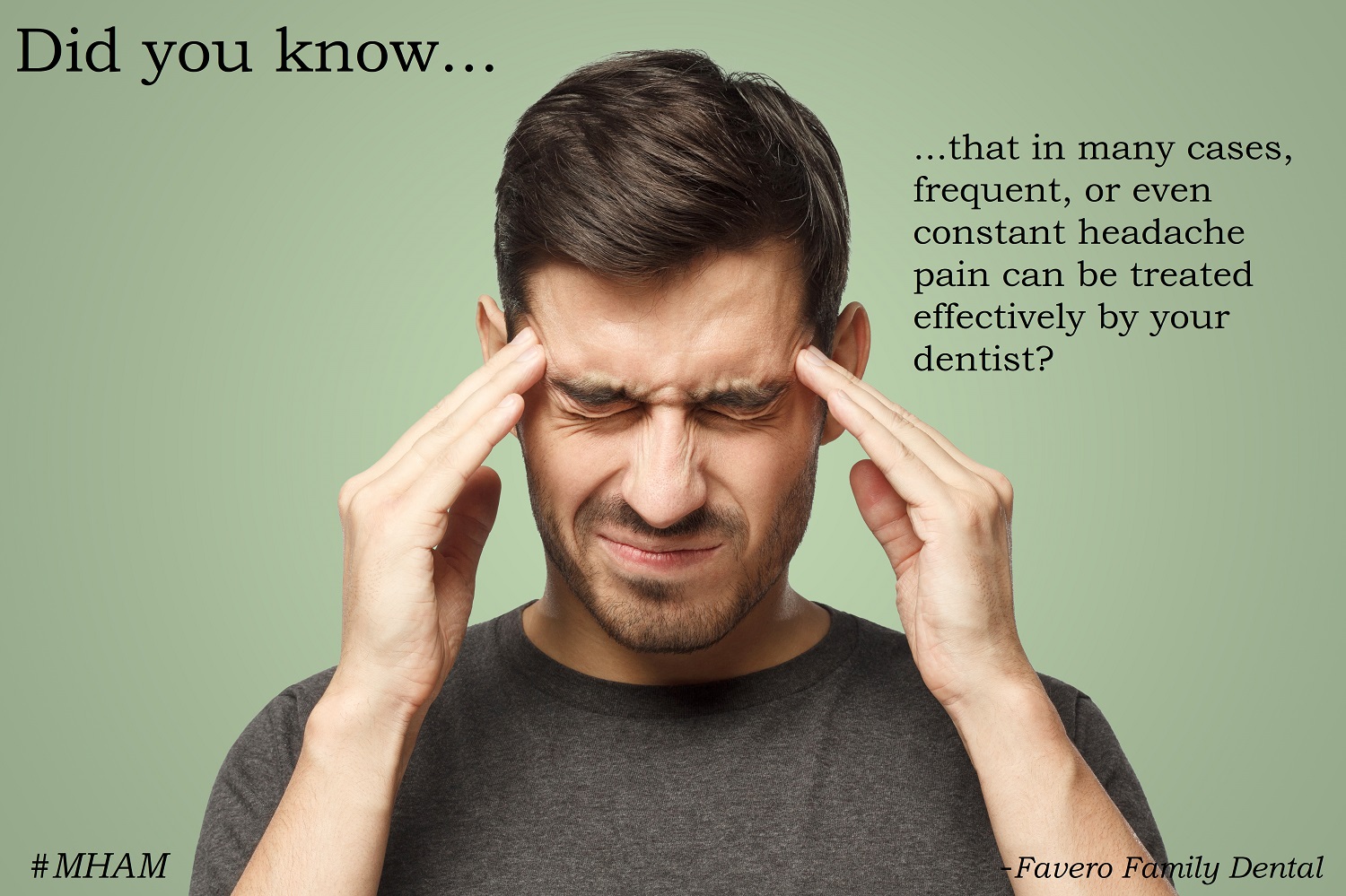One billion people across the globe suffer from migraines. While a migraine isn’t a specific oral disease, migraines can be related to tooth pain and certain conditions causing oral or facial pain.
The Migraine Research Foundation emphasizes that a migraine is more than a powerful headache. In fact, a headache is only a symptom of a migraine, which can result in acute pain throbbing on either or both sides of your head.
Symptoms of Migraines May Include:
- Nausea
- Vomiting
- Dizziness
- Facial Tingling
- Numbness
- Sensitivity to Light or Sound
Many factors can trigger a migraine including: lifestyle, environment, weather, hormones and medications
Migraine-Orofacial Connection
Orofacial refers to your head, neck and oral cavity. This includes your face, jaw, teeth and gums. Several orofacial conditions share certain migraine triggers, such as stress. Furthermore, certain orofacial conditions can intensify migraines, and you might mistake migraine pain for dental pain.
Temporomandibular Joint Disorder (TMJ)
TMJ results when the modified ball and socket joint connecting your upper and lower jaw doesn’t function correctly. The joint’s main purpose is to move the lower jaw in three directions: forward, backward and side-to-side. TMJ can feel as though your jaw clicks and pops or as if it becomes momentarily stuck.
TMJ symptoms include:
- Severe headaches or migraines
- Clicking or popping sounds
- Tender jaw muscles
- Earaches and toothaches
Your dentist can diagnose TMJ for certain and offer you solutions for jaw pain. Reducing symptoms related to muscle tension can alleviate the accompanying headache you might have.
Other ways to relieve or cope with TMJ pain include avoiding excess chewing (such as chewing gum), making time for regular exercise, and massaging your jaw.
Teeth Grinding and Clenching
You might experience bruxism, the act of grinding or clenching your teeth, only while asleep or perhaps throughout the day. Bruxism can be caused by stress, misaligned teeth, or nerve and muscle diseases in the face.
Bruxism symptoms can include:
- Morning headaches
- Migraines
- Grinding sounds at night
- Tight jaw muscles
- Cracked or damaged teeth, leading to tooth pain
If you display any symptoms, seek out your dentist for a proper diagnosis. Your dentist can solve dental-related bruxism by fixing your alignment or fitting you for an anti-grinding mouthguard.
Toothaches
If the pain and stress of a toothache are severe enough, migraines might result. If the cause of head pain stems from a cavity or gum issue, a dentist can help.
Tooth pain, jaw pain, headaches, or any facial pain might occur in conjunction with a migraine. Whatever is causing the pain, don’t wait to talk to your dentist to see if it is in oral problem. Your dental professional can either treat the pain or recommend a medical consultation.
Leave a reply →
